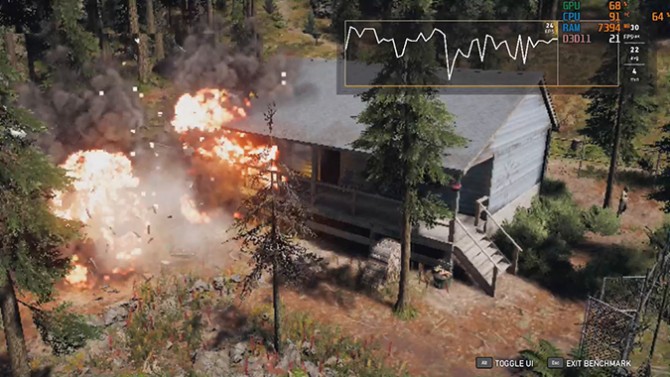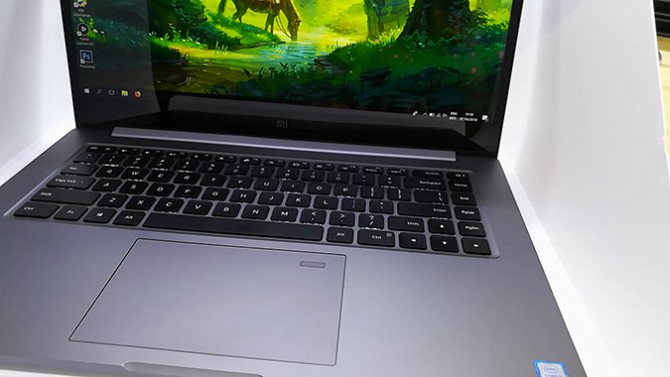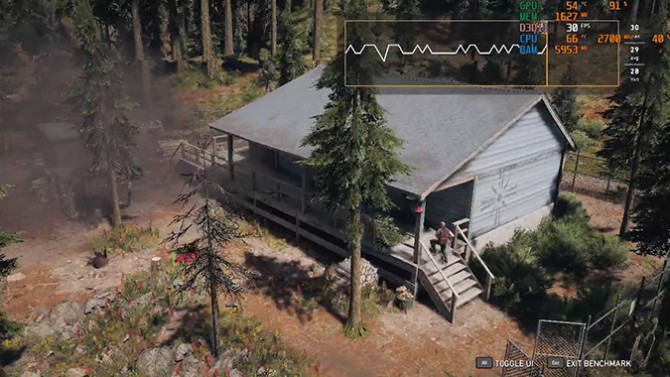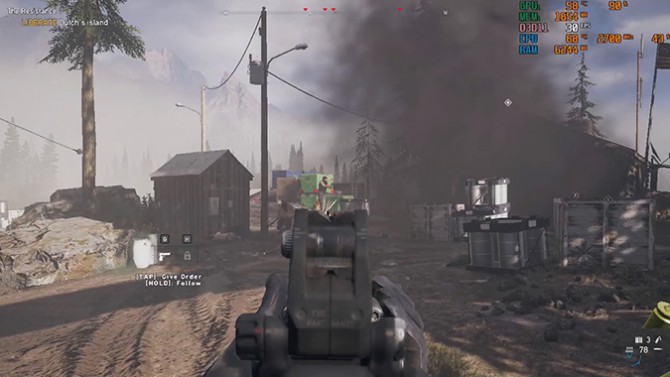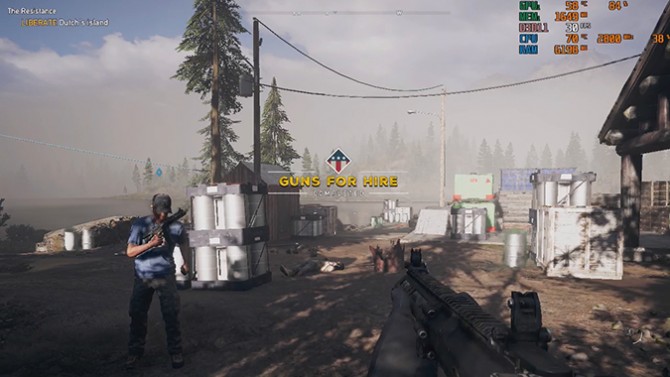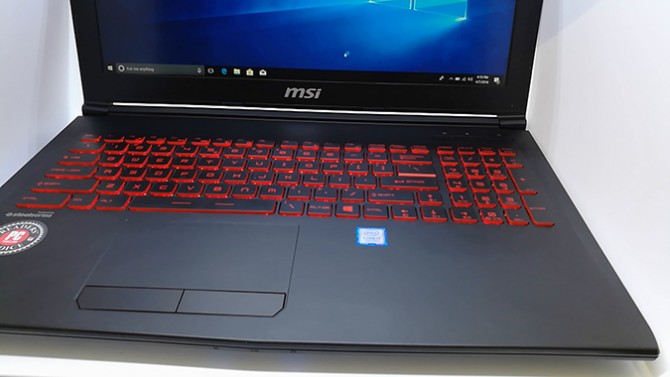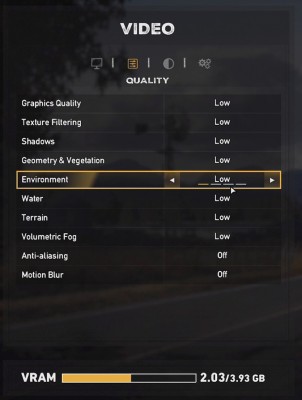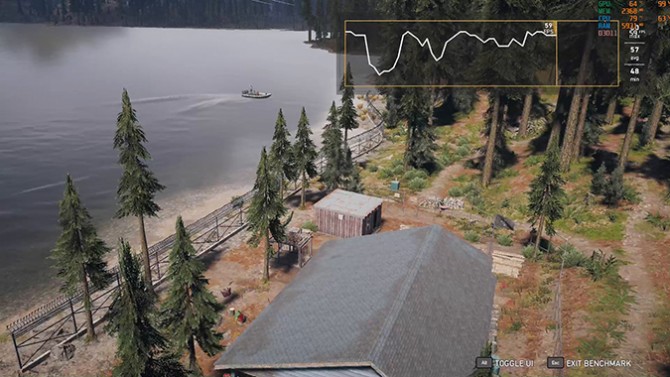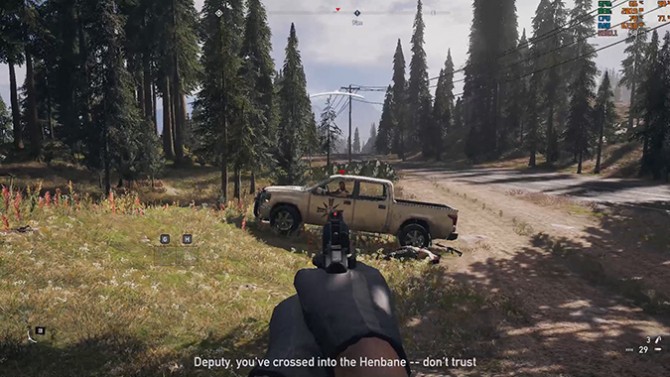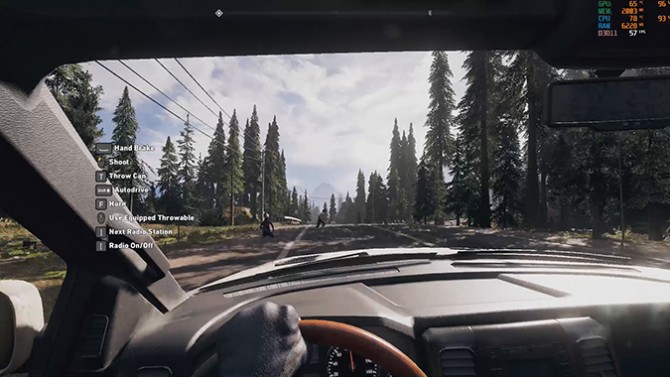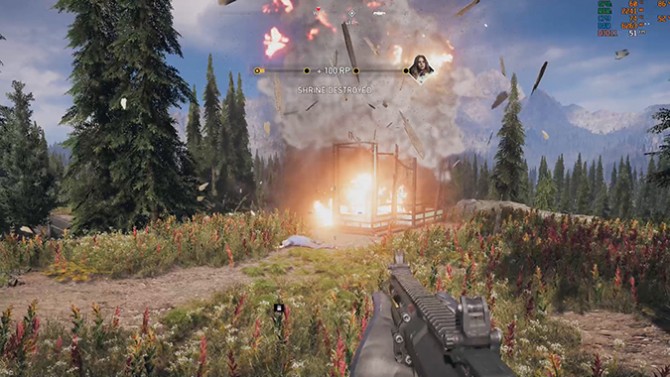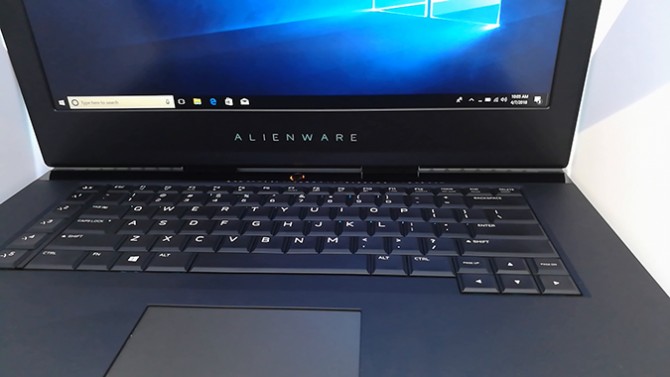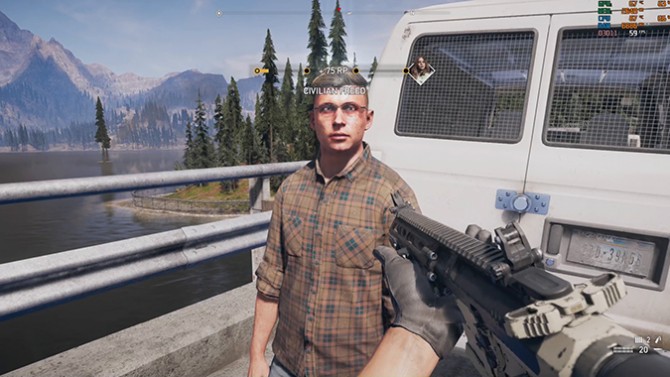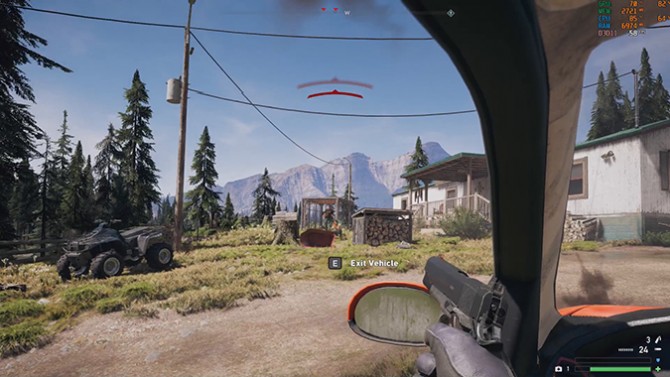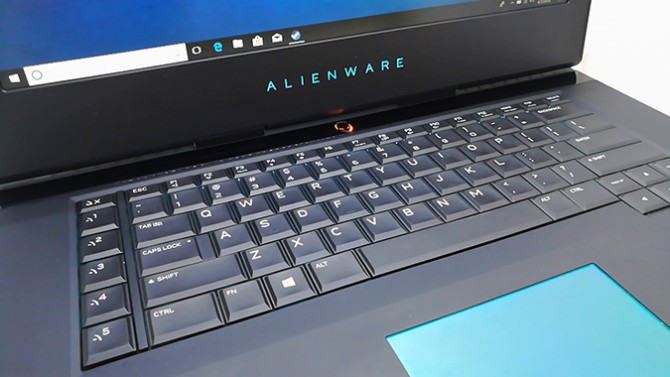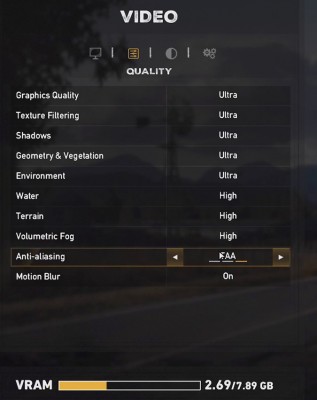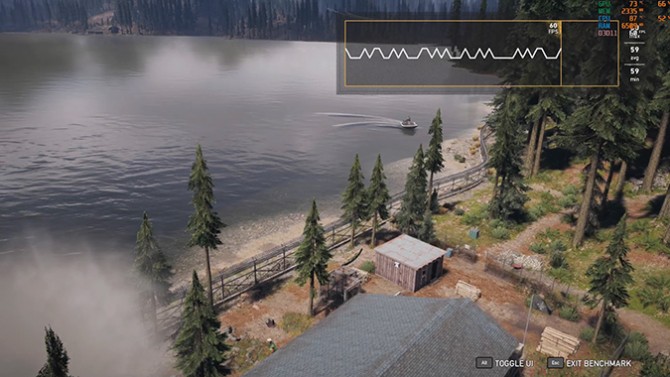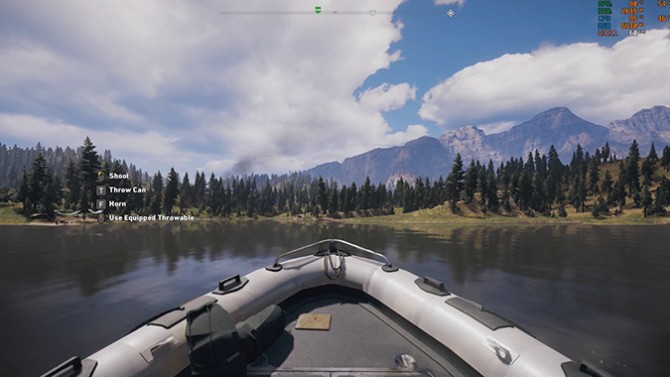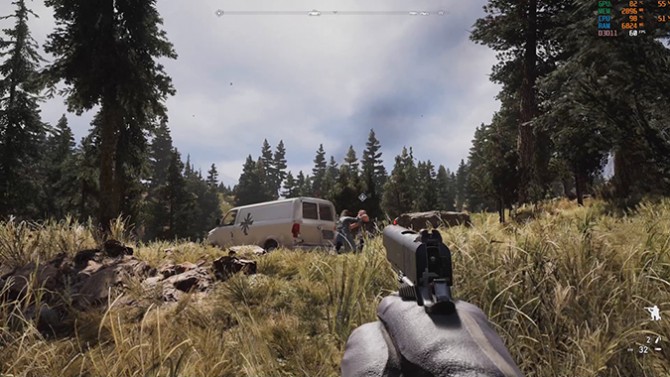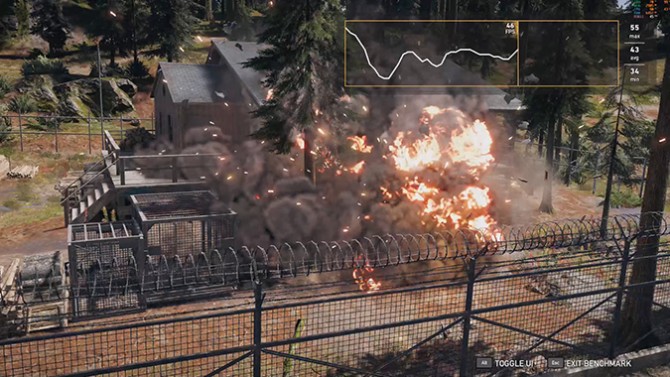What Kind of Laptop Do You Need to Play Far Cry 5?
Far Cry 5 is the latest entry in the explosive open-world franchise and, fortunately, the program's minimum system requirements are fairly low. According to the game’s publisher Ubisoft, you need just a Core i5-2400 CPU or higher, Nvidia GeForce 670 graphics or better and a mere 4GB of RAM.
| GPU | Best Resolution | Settings | FPS |
| Intel HD 620 (Dell XPS 13) | 1280 x 720 | Low | 24 fps |
| Nvidia MX 150 (Xiaomi Pro) | 1280 x 720 | Medium | 30 fps |
| Nvidia GTX 1050Ti (MSI GL62M-7REX) | 1920 x 1080 | Low | 60 fps |
| Nvidia GTX 1060 (Alienware 15 R3) | 1920 x 1080 | High | 60 fps |
| Nvidia GTX 1070 (Alienware 15 R3) | 1920 x 1080 /3840 x 2160 | Very High/Low | 60 fps/45 fps |
But what sort of laptop do you actually need to play this game well? And what kind of quality can you expect when playing Far Cry 5 on either higher and lower-end systems? To find out just what level of hardware gives you optimal graphical fidelity and frame rates, we tested the game on five different laptops: a lightweight machine with integrated graphics, an ultraportable with low end, Nvidia MX150 graphics, a budget gaming laptop with a Nvidia GTX 1050 Ti card, a mid-range a model with GTX 1060 graphics and a premium mobile gaming rig with a GTX 1070 on board.
Far Cry 5 on Intel HD Graphics
I was curious to see if there was any chance of running Far Cry 5 on a modern laptop with integrated, Intel HD graphics. So I tried it on the Dell XPS 13 9360 from 2017, which sports an Intel Core i7-8550U, Intel UHD Graphics 620 and 8GB of RAM.
I dropped the settings to their lowest and set the resolution to 1280x720 (the game doesn’t go any lower). I also lowered the render resolution (internal resolution) to the minimum setting of 0.5, leaving us with a practical resolution of 640x360.
At these settings, the game managed to maintain an average of 24 frames per second, which is below our normal 30 ps playability threshold. While there were frequent frame drops both on the benchmark and the actual game, it was usable with some effort. If all you have is a modern Intel HD and you must absolutely play this game, you can probably get away with it if you are patient.
Unlike games like Overwatch or Fortnite, Far Cry 5 does not seem to be designed with low resolutions in mind, so combat readability can be very tricky. Distinguishing enemies in the heat of conflict can be an issue.
Sign up to receive The Snapshot, a free special dispatch from Laptop Mag, in your inbox.
Verdict: You can play Far Cry 5 on Intel HD graphics, but the frame rates are so low that we wouldn't recommend it.
Far Cry 5 on Low-End, Nvidia MX150 Graphics
How much improvement do you see if you run Far Cry 5 on a low-end, dedicated GPU? Nvidia's MX150 is the company's weakest card and appears as a value-add in mainstream, non-gaming laptops like the Acer Aspire E 15.
For the purposes of our test, I ran the game on an imported Xiaomi Pro ultrabook sporting an i5-8250U quad-core CPU, 8GB of RAM and the aforementioned MX150.
Forget about full HD. Running the game at 1920x1080 on the lowest settings delivers about 22 fps, which is way too slow. You can run the Far Cry 5 at its minimum resolution of 1280x720 but don't expect a smooth 60 fps, even at the lowest settings.
The good thing is that, when you run it at 1280x720, limit your expectations and lock the framerate in the menu to 30 (the framerate the game uses on consoles), it not only manages to maintain this target but is steady even when you raise some of the settings to medium such as shadows, geometry and vegetation, environment, water, terrain, and volumetric fog.
Texture filtering needs to remain on low to avoid maxing out the GPU's 2GB of VRAM. Going over this limit has severe effects on overall performance.
The lower resolution (and lack of anti-aliasing) is very noticeable on any cables or diagonal lines and the low-texture filtering is immediately obvious on any surface after a certain distance. However, the extra detail on water and vegetation is noticeable, although hard to appreciate on the lower resolution (especially in the case of shadows, which look very similar to the lowest settings).
But while playing, these details may quickly be forgotten as the experience is perfectly enjoyable at 30 fps and 1280 x 720 resolution, with no performance drops even in the heat of combat.
If all you have is an ultrabook with a comparable dedicated GPU you can definitely get started on this game and enjoy the whole thing.
Verdict: Playable, but you'll lose some detail.
Far Cry 5 on a Budget, GTX 1050 Ti Gaming Laptop
Let's jump from an ultrabook to a gaming laptop. I used the MSI GL62M-7REX, a budget option among the gaming category. It comes equipped with a Core i7-7700HQ CPU, 8 GB of DDR4 RAM and a GTX 1050 Ti GPU with 4GB of VRAM.
With such a jump in specs, I was able to set the resolution to 1920 x 1080 with 60 fps as my target.
While the GTX 1050 Ti's 4GB of VRAM is quite strong, we can only reach 1080p / 60 fps at the lowest settings. Performance drops to around 50 fps on the benchmark when many objects are rendered simultaneously, but the average was still very close to a perfect 60.
To get even this level of performance, you need to disable VSync. Far Cry 5's VSync locks to either 60 or 30 fps, depending on performance and it tends to jump very quickly to 30 fps if the frame rate is not perfectly maintained at 60 fps (such as in the case of our test).
The jump in resolution from 720p to 1080p is great terms of detail but it also means the lower settings are a bit more obvious.
There are some unexpected drops in performance when new areas are loading, but in general, the laptop is able to keep on target. The extra fluidity of the 60 fps frame rate is noticeable in combat and other intense action sequences.
If you prefer effects over visibility, you can try lowering the internal resolution. With the render resolution setting at 0.8, a practical resolution of 1536x864, you can raise all settings to medium with the exception of anti-aliasing and motion blur) and still get 60 fps. However, the difference between low settings and medium settings is not as dramatic as you would expect. You will mainly notice the better geometry and draw distance which can improve your experience.
Verdict: Playable at a smooth 60 fps.
Far Cry 5 on a GTX 1060 Laptop
Kicking it up a notch, I tested Far Cry 5 on an Alienware 15 R3 with a Core i7-7700HQ CPU, 8GB of RAM and an Nvidia GTX 1060 GPU, the next tier in Nvidia's lineup.
This upgrade provides a very dramatic jump in quality, as you can now turn up all settings to high, use TAA anti-aliasing and motion blur and still maintain 60 fps (the heavier sections of the benchmark only dropped to about 54 fps). This means that we can finally enable VSync without fear of the game locking to 30 fps.
This time the changes are quite noticeable. The textures look good at any distance, the water reflections are very realistic, the game models, geometry and the whole world look more vibrant and colourful. Volumetric fog is occasionally present and appreciable in certain moments during the game.
With all of that detail, you get excellent performance, with a frame rate that rarely drops below 55 fps, even during intense combat.
Verdict: Playable with a smooth frame rate and great effects.
What do we get if we go further?
Far Cry on a GTX 1070 Laptop
So how much better is the experience on a high-end gaming laptop? To find out, I tested on another Alienware 15 R3, which had a Core i7-7820HQ, 16GB of RAM and a mighty Nvidia GTX 1070 GPU.
Four settings can go up to ultra: texture filtering, shadows, geometry and vegetation and environment, so now we can officially max out the game on 1080p and still achieve 60 fps.
The visual change is not as dramatic as it was when going from medium settings to high, with more particles and better shadows being the only major effects I noticed when comparing footage from both settings side by side. On an actual gameplay test, the increase in vegetation density and quality is a bit more obvious but the experience seems to be similar to what you get on high settings.
The GPU has plenty of processing power to spare, with usage rarely hitting 70% during combat.
This Alienware 15 R3 variant has a 4K monitor, so I was curious to see if that extra power could be used to reach this super-high resolution.
When I switched to the lowest settings in 4K resolution, the benchmark hovered around 44 fps, dropping to 34 fps at its worst moments but still maintaining a very comfortable level of performance throughout the test.
The game plays really well, even during heavy combat. All the issues related to lower settings arise again, so this becomes a tradeoff between resolution and graphical quality.
Verdict: Very playable, even at 4K resolution.
The Bottom Line
Far Cry 5 is a surprisingly flexible game that scales in interesting ways on a variety of specs. If you are desperate enough to play on a laptop with the latest Intel HD graphics, the experience is poor but you may be able to live with it.
If your priority is just to play the game without much flair, a low-end, dedicated GPU like the MX150 is acceptable for 720p and 30 fps. The jump to a mid-range GPU such as the GTX 1050 Ti allows for 60 fps at 1080p, but will not allow much detail beyond the lowest settings unless you are willing to start dropping the resolution or limiting the framerate.
A laptop with a GTX 1060 offers the best performance for the money. It allows you to get 60 fps at 1080p, on high settings. The change from low or medium settings to high is very noticeable.
If money is no object, a GTX 1070 laptop not only allows the highest settings for the 1080p / 60fps target, but does so without even maxing out the GPU. If you want to play in 4K, the GPU should suffice for the lowest settings and an average of 40 FPS. If you want to raise the settings in 4K you might need something even more powerful, like a GTX 1080.
Credit: Laptop Mag

